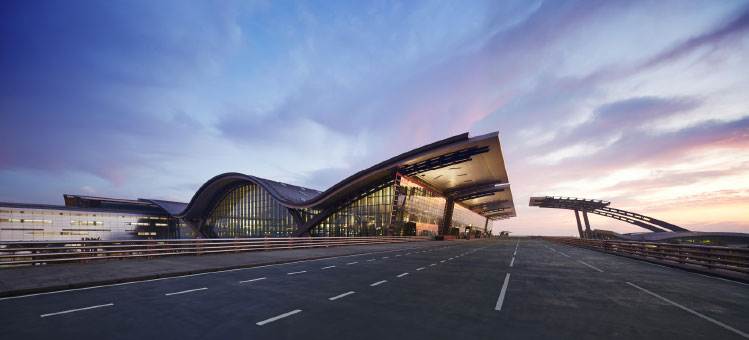
Badr Al Meer, Chief Operating Officer, Hamad International Airport: “HIA is not just a travel hub, but offers an overall travel experience with our core focus being on passenger engagement. We aim to redefine the passenger experience with high levels of investment in facilities and services.”
Badr Al Meer, Chief Operating Officer, Hamad International Airport, interviewed by Samantha Jenkins.
The opening of Hamad International Airport (HIA) heralded an exciting new chapter in Qatar’s aviation industry, and it is indeed an important economic kingpin for the country. Qatar is going through a rapid process of development, has a rich cultural and historical heritage, and is one of the fastest-growing economies in the world. “Our government sees this evolution as a complete equation: to grow the economy, you also need to grow the facilities and infrastructure. Hamad International Airport is an important part of that equation, and was created in line with the Qatar National Vision 2030,” says Badr Al Meer, Chief Operating Officer at HIA.
The eyes of the industry were on HIA on the $16 billion facility’s full commercial opening in May 2014. The unique approach to its development saw national carrier Qatar Airways play a lead role in HIA’s design and delivery, and its impressive traffic performance since opening can largely be attributed to the airline’s rapid growth. HIA handled 28 million passengers in its first year of operation, and expects that figure to reach 30 million by the end of 2015. This can largely be attributed to the rapid growth of national carrier Qatar Airways. “The airport was also built to support the continuing growth of Qatar Airways, which has introduced eight new destinations in 2015 and has already announced six for next year,” says Al Meer. “It is one of the world’s fastest-growing airlines and has added multiple new aircraft over the past 18 months, including the A350 for which is was the global launch customer, and its bespoke A380.”
HIA is, of course, competing with two similarly ambitious and fast-growing hubs in neighbouring Dubai and Abu Dhabi. While Dubai, in particular, has become a destination in its own right, the majority of passengers at all three airports are transiting. Although built to facilitate Qatar Airways’ growth, Al Meer expresses a desire to expand HIA’s hub function and attract new airlines. “Our dual advantage of the country’s growing economy and being conveniently located within an eight-hour flight for more than two-thirds of the global population, provides a distinct benefit for those airlines considering a new route,” he says. “Since our travelling public in the country and region is multicultural, it opens opportunities for a range of airlines to develop routes to Doha.”

Approval has been granted for the launch of the second phase of expansion by the airport’s steering committee – an important stepping stone that will see capacity increased to over 50 million passengers.
“Aiming to redefine the passenger experience”
HIA is exhibiting at ACI Airport Exchange as a platform “to showcase our state-of-the-art services and facilities,” explains Al Meer. At the heart of this is a focus on the passenger experience. While the 70 shops, 30 food & beverage outlets, Vitality Spa, and wellbeing and fitness centre, are all part of this, Al Meer says the development of mobile applications and strong digital engagement is of key importance. Free WiFi is available throughout the airport, which also has a “HIA Qatar” app. It engages with travellers through social media, with almost 50,000 likes on Facebook, and a similar number of followers on Twitter (@HIAQatar), and also Instagram.
“HIA is not just a travel hub, but offers an overall travel experience with our core focus being on passenger engagement. We aim to redefine the passenger experience with high levels of investment in facilities and services,” states Al Meer.
Looking ahead, approval has been granted for the launch of the second phase of expansion by the airport’s steering committee – an important stepping stone that will see capacity increased to over 50 million passengers. The design contract is set to be awarded by the end of 2015, so details on what phase two will involve remain unclear, but we do know it will include two new concourses – D and E. The desire, Al Meer says, is to offer a “unique passenger experience that helps redefine the role of a modern airport”.







